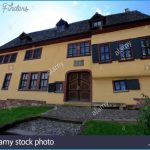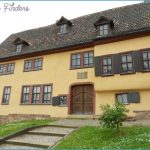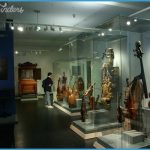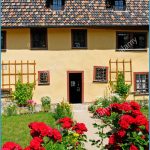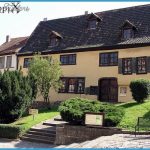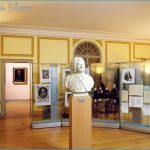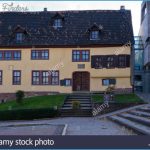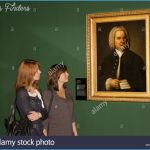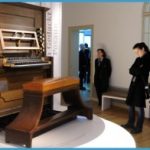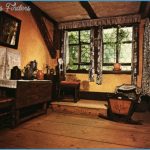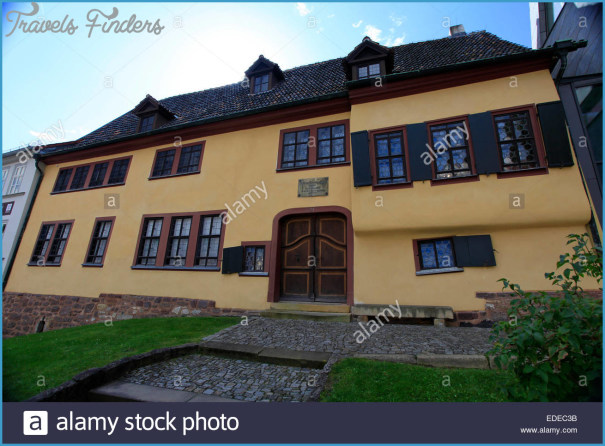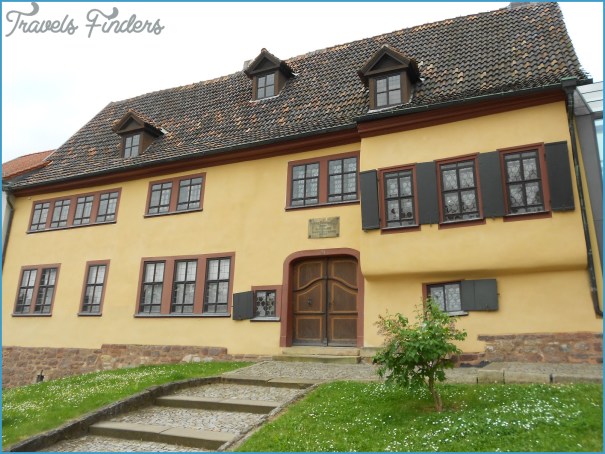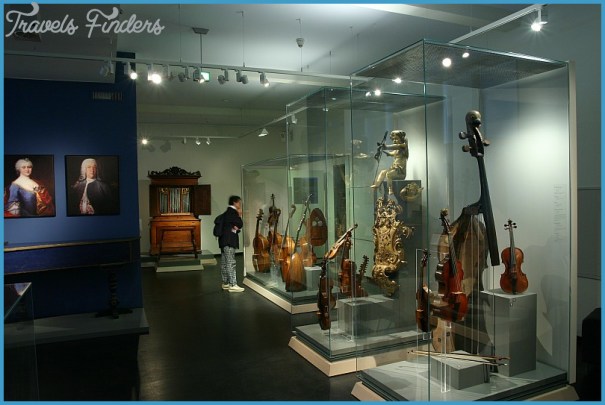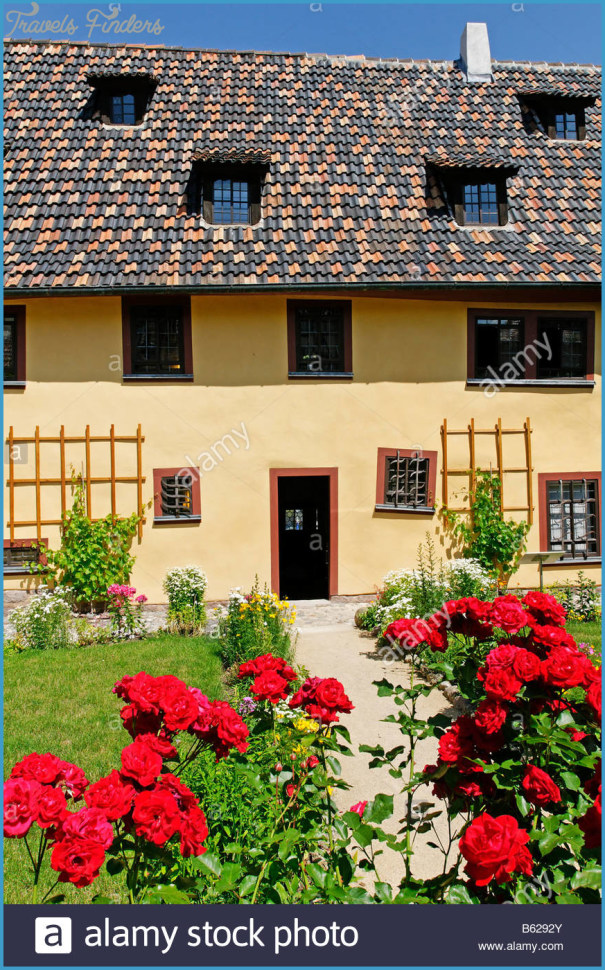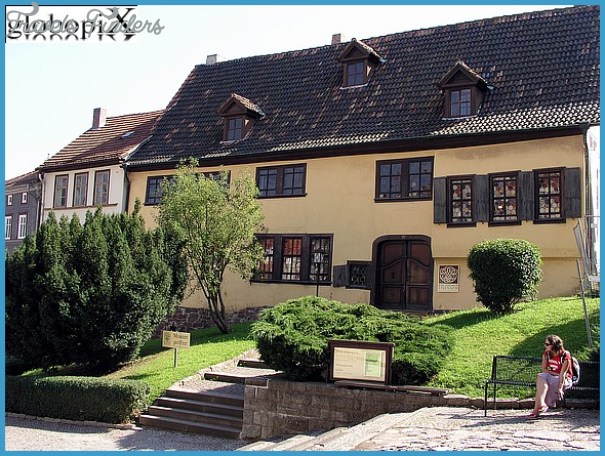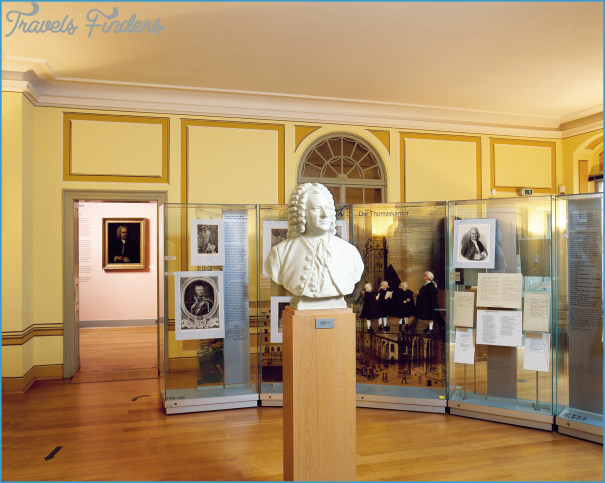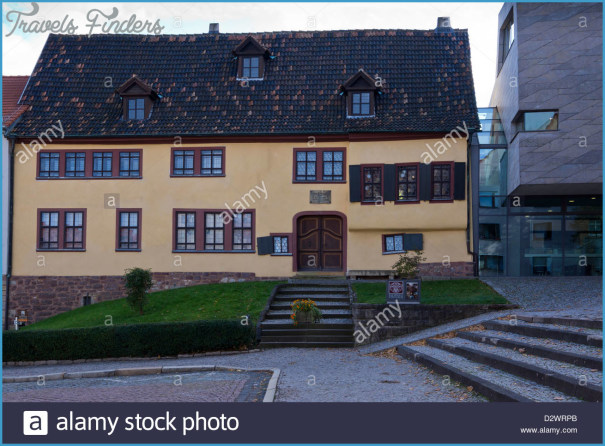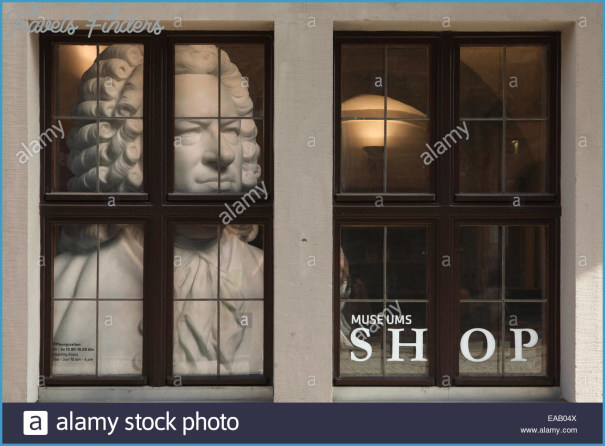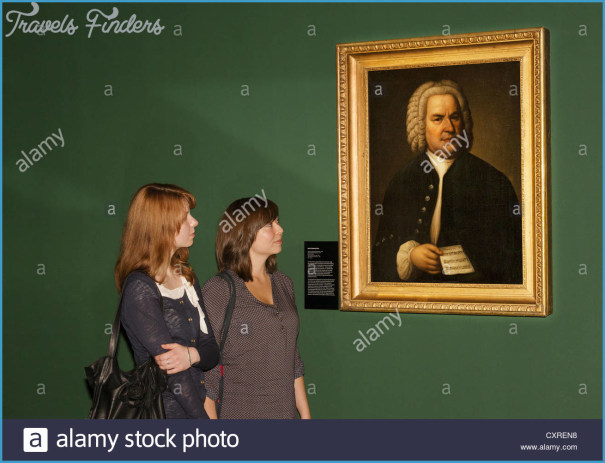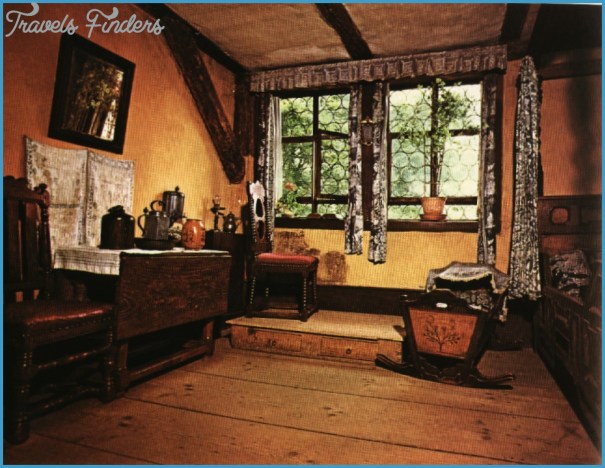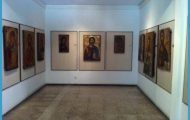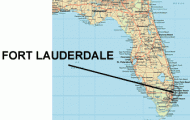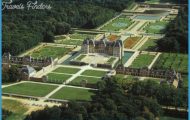‘Bach means Johann Sebastian Bac
h to music lovers the world over, and the sites associated with the places in Thuringia and Saxony where he lived and worked form a well-trodden path of pilgrimage. A number of travel guides, in the form of monographs and brochures, containing a mine of useful information such as itineraries and maps, are available from local tourist information bureaux; several are listed below. In addition to museums and memorials, they include places he merely visited, the churches with which he had connections and the organs he tuned. Most however are available only in German.
Many earlier members of the Bach family pursued musical careers, and they too are particularly remembered in Wechmar, Eisenach and Arnstadt. It comes then as a surprise that, apart from a single room devoted to Wilhelm Friedemann Bach in Halle, where he worked for a time, there is no museum or memorial place dedicated to any of Bach’s sons. Carl Philipp Emanuel lived in Frankfurt an der Oder in the mid-1730s, and in the concert hall that bears his name there is a small display devoted to him; he might aptly have been honoured by Berlin or Hamburg. Johann Christian could appropriately have been remembered in London.
Johann Sebastian Bach Museum Photo Gallery
Wechmar, a small Thuringian town south-east of Gotha, boasts the only surviving original ‘Bach house. As early as 1892 a memorial plaque was erected on the building, but it was taken down in 1927 and lost until 1994 when the building was restored and opened to the public. Most of the Wechmar displays focus on Bach family genealogy, incorporating facsimiles of early archival documents, but the little house enjoys a wider remit as a local history museum. The remnants of a bakery on the ground floor, including a working oven and tables and chairs for serving coffee and cake, compete for space with the displays.
The ancestral Bach house at Wechmar and occasional concerts. The upper floor houses a museum to Thuringian musicians and instrument makers, with a violin workshop and a historic organ among the exhibits.
Members of the Bach family lived in Wechmar between the mid-16th century and the 19th: the earliest verifiable Bach was documented in 1561. The first to live in the house was Johann Sebastian’s great-great-grandfather, Veit Bach, a baker who played the ‘cythringen and who had emigrated from Pressburg during the Counter-Reformation; the ruins of his mill, a few minutes walk away at MuhlenstraSe 24, still exist. His son Hans, a ‘Spielmann’, and apparently a travelling musician and carpet-maker, settled in Wechmar and died there. Johann Sebastian’s elder brother Johann Christoph lived in Wechmar and so, still later, did his grandson Ernst Christian, a Kantor.
More than one strand of the family lived in Eisenach, where Johann Sebastian himself was born on 21 March 1685, the youngest son of Johann Ambrosius Bach, a ‘Stadtpfeifer’. The house where his family lived at Fleischgasse 35 no longer exists. In the 19th century it was mistakenly thought that they lived at Frauenplan 21 and in 1868 that house was designated the Bachhaus; it was bought by the Neue Bachgesellschaft in 1906 and opened as a Bach family memorial museum the following year.
In 1973 a larger museum – incorporating displays of Thuringian social history, together with educational, research and performance facilities – was created by connecting it with two adjoining houses. Instruments from the museum’s collection of more than 300, from the 17th and 18th centuries, many of them kept in playing condition, are displayed in the room used for concerts and lectures. A statue of Johann Sebastian by Adolf von Donndorf has presided over the Frauenplan, a large square, since 1884. Eisenach was the home of several other Baroque composers – Johann Pachelbel, Daniel Eberlin, Pantaleon Hebenstreit and Georg Philipp Telemann – who held posts at the ducal court at various times. In addition to the annual Thuringer Bach-Wochen and Eisenacher Bach-Tage in March there are biennial Telemann-Tage in June.
In 1695, after their father’s death, Johann Sebastian and his brother Johann Jacob were sent to Ohrdruf to live with their eldest brother, Johann Christoph, organist at the Michaeliskirche; he was there for five years and is said to have had his first music lessons there. A memorial plaque claiming Bach’s residency marks the long supposed Bach house, in what was formerly the Schulgasse and is now the Johann-Sebastian-Bach-StraSe. But contemporary maps show no street corresponding to the part of it in which the house now stands – it is in an extension, added only after a fire had consumed much of the town in 1753 – and local scholars believe that the Bachs in fact lived in a house in the adjoining Lappengasse, now no.5, which clearly has been somewhat rebuilt over three centuries. The tower of St Michael’s, restored in 1999 and all that remains of the church after wartime destruction, is visible down Johann-Sebastian-Bach-StraSe. At SchloS Ehrenstein there is a small Heimatmuseum, a museum of local history, which devotes one room and parts of two adjoining areas to Bach. There are original school registers, showing his position in the class, and the matriculation book in which his departure to Luneburg is noted, as well as a letter of 1690 from his brother and a report of 1693, by Pachelbel, on the Michaeliskirche organ along with the book recording organ repairs. An original 17th-century pigeon- hole rack for rolled-up documents shows how Bach as a child could have purloined his brother’s music manuscripts, as related in the famous anecdote. There are also records of later Bachs in Ohrdruf, where members of the family survived up to 1933.
Bach got around a good deal, and in various parts of northern, eastern and central Germany there are plaques recording his one-time presence: on the St Michael’s church at Luneburg where as a young man he was a chorister, on St Bartholomew’s church in Dornheim where in 1707 he and his cousin Maria Barbara Bach were married, and on St Blasius’s church in Muhlhausen where he was briefly organist in that year, as well as on the site in Weimar of his house, next to the Elephant Hotel, where Wilhelm Friedemann was born in 1710 and Carl Philipp in 1714.
Several other members of the Bach family – including the family of the organist Johann Michael, who became Johann Sebastian’s father-in-law – lived and worked in Arnstadt throughout the 17th and 18th centuries; 25 of them are buried there. The Neue Kirche – in the corner of the marketplace, near the Rathaus – where Johann Sebastian was organist between 1703 and 1707 has been known since 1937 as the Bach-Kirche; just in case there was any doubt, his portrait nestles among the pipes of the early 20th-century organ now in use. Houses with a Bach connection still survive at Kohlgasse 7 and Ledermarkt 7; Johann Sebastian probably lived at the latter, possibly both.
Most of the ground floor of the local history museum, the ‘Haus zum Palmbaum’, is devoted to the Bach family. Two rooms chronicle the lives of several earlier members of the family who worked in Arnstadt, with reproduced documents, family trees, and a series of large books in which facsimiles of documents are shown, with transcriptions and explanations opposite – they cover not only the Bachs but also their contemporaries among other Arnstadt musicians and local musical activities more generally. In the room devoted to J.S. Bach himself stands the original organ console installed in the Neue Kirche in 1703 and used in Bach’s time there. There are various documents relating to his life, including his appointment, his marriage, his notorious journey to Lubeck and his letter of resignation, and also an account of the local court and the hierarchy of the musical establishment in Arnstadt during Bach’s years there. The tercentenary of his birth in 1985 was celebrated with the erection in the marketplace of a statue of the young Bach by Bernd Grobel.
In 1717 Johann Sebastian left his court post at Weimar for one in Kothen. It is not known where he and his family lived, only that his first wife died there in 1720, but the castle where he worked survives. The throne room, its wall lined with mirrors, must have been where the court orchestra performed and where early versions of the Brandenburg Concertos Bach composed in Kothen might have been heard. Until 1996 there was a Bach exhibition in the local Historisches Museum, but that gave way to a larger one in the castle museum. In the collection are original letters from Carl Philipp Emanuel to his publisher and a copy of a vocal partbook for one of their father’s cantatas in Wilhelm Friedemann’s hand. The state rooms – in which presumably Bach sometimes performed with Rights were not granted to include these illustrations in electronic media.
The castle at Kothen Rights were not granted to include these illustrations in electronic media Please refer to print publication Thomaskirchhof and former Thomasschule in Leipzig Prince Leopold and his musicians – are large and splendid, although there is not a great deal in them now that is strictly relevant to Bach. Since 1983 concerts have been given in the castle in the Bachsaal, a highly decorated room above the 1730 chapel, itself reconstructed and restored in 1991 with its fine late Baroque gallery together with its 1754 Zuberbier organ. In 1885, on the bicentenary of Bach’s birth, a bust by Heinrich Pohlmann was erected in the Bachplatz in the town.
Bach spent his last 27 years in Leipzig, moving there in 1723 on his appointment as Thomaskantor, in charge of music at the Thomasschule, and director of music at both the Thomaskirche and the Nikolaikirche, where many of his cantatas and the Passions were first performed. He, his second wife Anna Magdalena Wilcke and their family took up residence in the school, adjacent to the Thomaskirche; the Thomasschule, alas, disappeared in 1902, but the church itself still stands, thanks to restoration and rebuilding. Bach’s tenure there is commemorated by a large statue near the entrance, by Carl Seffner, erected in the Thomaskirchhof in 1908 ; inside, beneath the floor of the choir, is the grave containing what are supposed to be his remains, moved from the Johanniskirche cemetery after their ‘authentication in 1894.
Directly across the street, the 400-year-old Bosehaus at Thomaskirchhof 16 has served since 1985 – it was opened on the tercentenary of his birth – as the Johann-Sebastian-Bach-Museum. In Bach’s day it belonged to the Bose family, who were merchants dealing in precious metals. The cafe a few doors away serves to remind pilgrims of Zimmermann’s cafe, where Bach’s collegium musicum used to perform and for which much of his chamber music and many of his concertos were composed.
The Leipzig Bach Museum is one of a group of museums administered by the city and it benefits from their combined resources, which include the Thomasschule collection of Bach autographs and other important Bachiana, as well as the famous 1746 portrait by Elias Gottlob Haussmann the only certainly authentic representation of the great man. The museum displays, in five rooms on the first floor, are neatly and logically organized. The entry room is concerned chiefly with the Thomasschule and Bach’s role there, portrayed on glass panels, with some characteristically German touches of wit. A second room pictures his contemporaries, pupils and successors. Another room charts the lives of Bach’s sons and some of his other relatives, and the next explains Bach’s responsibilities as Director Musices and the history of the position of Thomaskantor. There are early editions of his music. At the rear there is an attractive chamber music salon, which together with the adjoining rooms displays the city’s fine collection of period keyboard instruments.
In 1950, on the bicentenary of Bach’s death – long before the museum was founded – the Bach-Archiv Leipzig was established in the Bosehaus.
Now the leading centre of Bach scholarship and research, it curates the collection and is responsible for mounting the regularly changing exhibitions in the museum; it publishes the Bach-Jahrbuch and is involved with the Bach-Institut in Gottingen in producing the new critical edition of Bach’s music, the Neue Bach-Ausgabe.
It should be noted that Bach’s coffeehouse music-making in Leipzig is commemorated, not on the original Zimmerman site, destroyed in World War II, but in the Coffee-Baum opposite the Rathaus, where there is a small display on the top floor, chiefly concerned with the Coffee Cantata.
Ironically, it is in the Handel-Haus in Halle, which also serves as a museum of local musical history, that Wilhelm Friedemann Bach is commemorated. Born when his father was in Weimar, in 1710, he had lived in Kothen and Leipzig with his family and in 1733 took the position of organist at the Sophienkirche in Dresden. In 1746 he moved to Halle as organist of the principal church, the Liebfrauenkirche or Marktkirche, and Director Musices of the city, regarded as one of the most important organist’s posts in Germany. But Pietist Halle did not suit him and he relinquished the post in 1764, though he remained in the city until 1770, living at Grosse KlausstraSe 18, just off the Marktplatz; he died in Berlin in 1784. In a room on the second floor of the Handel-Haus, his Halle years are commemorated with a number of facsimile manuscripts and printed items and with the characterful portrait of him by Friedrich Georg Weitsch, in his fur-lined coat and black hat, where his sardonic smile and gleaming eyes make it all too clear that Halle was not the place for him. The naming of the square in front of the Moritzburg after W.F. Bach perhaps shows that Halle has forgiven this gifted son of the great man.

